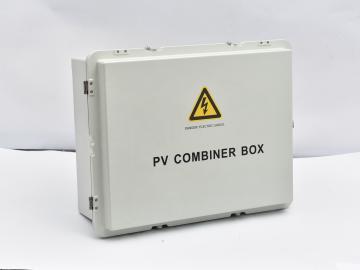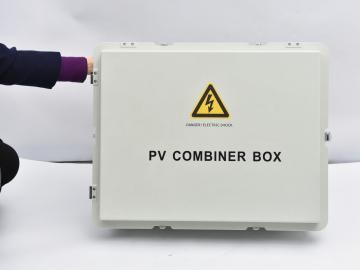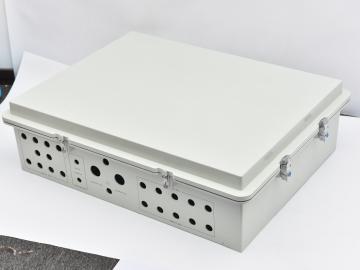With the continuous development of solar photovoltaic power generation technology, the photovoltaic combiner box is a crucial part of the photovoltaic power generation system, and its performance directly affects the efficiency and stability of the entire photovoltaic power generation system. Fiberglass Reinforced Polyester (FRP) enclosures, as a new type of material, has been widely used in photovoltaic combiner boxes, and its innovation, economy and superiority have attracted more and more attention.

1. Innovation
Traditional photovoltaic combiner boxes are usually made of metal materials, such as stainless steel, aluminum alloy, etc. These materials have excellent mechanical properties and corrosion resistance, and can meet the normal use requirements of photovoltaic combiner boxes. However, problems such as the high cost of metal materials and low recycling rates have become increasingly prominent. In contrast, FRP enclosures, as a new type of composite material, has the advantages of excellent mechanical properties, light weight, high corrosion resistance, etc., which can effectively reduce the cost and recycling rate of photovoltaic combiner boxes, and has a high innovation sex.
2. Economy
FRP enclosures offer significant economical advantages over metallic materials. First, the cost of FRP enclosures is relatively low, which is due to the high production efficiency and relatively low production cost of FRP materials. Secondly, the FRP enclosures has excellent chemical corrosion resistance, which can effectively reduce the maintenance cost of the combiner box. In addition, FRP enclosures can be customized and designed and manufactured according to actual needs, which can effectively improve production efficiency and reduce costs. Therefore, from an economic point of view, FRP enclosures are a more economical choice.
3. It is more suitable as a combiner box than a metal shell
Compared with metal materials, FRP enclosures has better flexibility and impact resistance, and can better adapt to the normal use environment of photovoltaic combiner boxes. In addition, the FRP enclosures has high thermal stability and oxidation resistance, which can better resist the interference and influence of the external environment. These advantages make the FRP shell more widely used in photovoltaic combiner boxes, which can better ensure the efficiency and stability of photovoltaic power generation systems.
To sum up, as a new type of material, FRP housing has been widely used in photovoltaic combiner boxes, and its innovation, economy and superiority have attracted more and more attention. Compared with traditional metal materials, FRP shell has higher cost performance and can better meet the practical application requirements of photovoltaic power generation systems. It is a promising new material.

